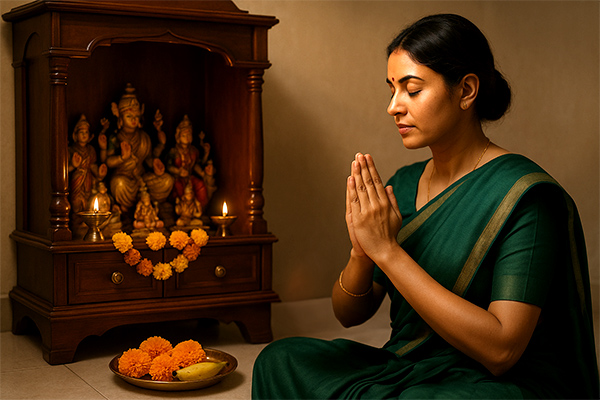
In Hindu worship, every gesture carries meaning. When a devotee folds their hands, touches specific points on the body, or performs subtle movements with their fingers during a puja, they are not simply following tradition. They are invoking divine energies through mudras.
Mudras, or sacred hand gestures, are an essential part of Vedic rituals. They act as spiritual sign language, allowing the worshiper to invite, honour, establish, and offer to the deity, not just in word, but through the body itself. Rooted in Tantra, Yoga, and Agamic traditions, these mudras represent intentions, energies, and symbolic acts that activate the deeper layers of devotion.
During a puja, a worshiper might use Avahani Mudra to invite the deity, Sthapani Mudra to establish their presence, Tarpana Mudra to offer libations, and Samnidapani Mudra to express heartfelt apology for any disturbance caused. Other gestures like Anjali, Chin, or Varada Mudra bring grace, fearlessness, and surrender into the prayer.
These movements are codified, precise, and energetically potent. They transform puja from ritual into embodied devotion.
In this article, we’ll explore what mudras are, why they are used in Hindu worship, and how these ancient gestures continue to deepen spiritual practice in modern times.
What are Mudras and Why are They Used in Pujas?
The word Mudra is derived from the Sanskrit root “ mud, ” meaning joy or happiness. As described in the ancient tantric text Sharadatilaka:
“मुदमानंदं ददाति इति मुद्रा”
That which gives joy is called a Mudra.
In Hindu puja, mudras are sacred actions that awaken joy, channel devotion, and invoke divine presence. Every movement of the hands becomes a language of the soul, allowing the devotee to communicate with the Divine using both intention and physical expression.
Mudras are used at various stages of puja to:
- Invoke the deity’s presence (Avahani Mudra)
- Establish the deity in the heart or altar (Stapani Mudra)
- Offer water, food, and other sacred items (Tarpana Mudra)
- Express humility or apology (Samnidapani Mudra)
- Seal vows and intentions (Sankalpa Mudra)
Each mudra is a carefully designed gesture rooted in Tantric and Agamic scriptures, where every finger and movement corresponds to specific energies, deities, or cosmic principles. For instance, touching the thumb and index finger together in Chin Mudra represents the union of individual consciousness with supreme consciousness.
When performed with awareness, mudras become tools for:
- Concentrating the mind
- Directing prana (life force)
- Harmonizing body and mind during worship
- Establishing a subtle connection with the deity
In this way, mudras serve not only as ritual tools, but as bridges, linking the seen and unseen, the devotee and the Divine, the outer act of worship and the inner state of realization.
Mudras in Hindu Rituals and Their Symbolism
When you watch a priest perform a Vedic puja or a devotee seated before a deity, you’ll notice something subtle but powerful, the hands move with purpose. These movements, called mudras, are not just gestures of respect. They are invisible threads that weave prayer into presence.
In Hindu rituals, mudras are used to invite, install, serve, and release the deity. Each one is a carefully shaped expression, whether it’s the cupping of hands to offer water, the touching of the heart during mantra japa, or the precise finger positions during Nyasa. These are not add-ons to a ritual; they are the ritual in motion.
Behind every mudra lies a layer of meaning:
- A mudra might symbolize invitation-calling the divine into the space.
- It might represent surrender-as in folded palms of Anjali Mudra.
- Or it might hold power and affirmation-like the fear-dispelling Abhaya Mudra.
But the purpose goes beyond symbol. In Tantra and Agamic traditions, each mudra is believed to activate certain energy centres, much like mantras activate sound vibrations. The placement of fingers, the direction of the palm, and the sequencing of gestures all contribute to shaping the mood and energy of worship.
Just as a mantra gives sound to your devotion, a mudra gives it form.
These hand movements bring stillness into action, allowing the worshiper to engage the divine not only with words or thoughts but with the sacred intelligence of the body itself.
Common Mudras Used in Daily Puja Rituals
In the rhythm of daily worship, certain mudras appear so seamlessly that many devotees perform them instinctively, without always knowing their deeper purpose. These hand gestures are subtle tools that anchor the mind, express inner feeling, and guide the flow of ritual from one stage to the next.
Here are some of the most commonly used mudras during puja, along with their meanings and subtle functions:
Anjali Mudra (Gesture of Offering and Reverence)
_201964.jpg)
This is the most recognized mudra. Palms pressed together at the heart, fingers pointing upward. It expresses respect, devotion, and unity. Symbolically, it joins the right (solar/masculine) and left (lunar/feminine) energies, reflecting balance. It is used while chanting mantras, offering prayers, or receiving blessings.
Chin Mudra (Gesture of Consciousness)
_201963.jpg)
Formed by touching the thumb and index finger together, with the remaining fingers extended. While often used in meditation, in puja it serves as a gesture of mental clarity and surrender. The thumb represents divine awareness, and the index finger represents the individual self. Their union reflects the aim of all worship: unity with the Divine.
Abhaya Mudra (Gesture of Fearlessness)
_201965.jpg)
This mudra appears when the right hand is raised, palm facing forward, fingers upright. Though mostly seen in deity images, some priests and advanced practitioners briefly use this mudra to invoke divine protection and dispel inner fear during certain stages of worship or during invocation.
Varada Mudra (Gesture of Giving or Grace)
_201948.jpg)
The palm faces downward, fingers extended slightly downward. This mudra is about granting boons, blessings, or forgiveness. It’s often seen in deity statues and invoked mentally by the devotee while making personal offerings or asking for divine favour.
Nirvana Mudra (Gesture of Inner Release)
_201954.jpg)
This lesser-known but powerful mudra involves placing one hand over the other, palms upward, resting in the lap. It is used in advanced meditative worship and symbolizes detachment, completion, and readiness to dissolve the ego, a gesture of final surrender.
These mudras may look simple, but each one guides the mood of the puja, preparing the worshiper not just to act, but to feel, deeply and with presence.
Specific Mudras for Sankalpa and Nyasa
In Vedic and Tantric puja rituals, Sankalpa (setting of sacred intent) and Nyasa (ritual placement of energy through mantras and touch) are two of the most vital steps. These aren’t just recitations, they are acts of consecration. And mudras play a crucial role in shaping these acts into embodied spiritual commitments.
Sankalpa Mudra (Gesture of Sacred Intention)
The word Sankalpa means determined resolution or inner vow. At the beginning of a puja, the devotee makes a declaration of their intention. Stating their name, Gotra, location, and purpose for the ritual. To ground this resolve, a specific mudra is formed:
The right hand is placed over the left, both palms open and resting in the lap or on the knee.
This posture reflects balance between will and surrender, the right-hand symbolizing action, the left-hand receiving grace.
In some traditions, the thumb and ring finger are touched together to seal the vow.
This mudra is often held while chanting the Sankalpa mantra, forming a subtle contract between the devotee and the Divine.
Mudras in Nyasa (Hridaya, Shirsha, Shikha Nyasa and More)
Nyasa means 'to place.' In this practice, sacred syllables (bija mantras) are mentally and physically placed on specific parts of the body to consecrate it as a temple of the deity. Each placement is done using a mudra, and different types of Nyasa involve different gestures:
Hridaya Nyasa (Heart Placement)
_201958.jpg)
The right hand is gently placed over the heart centre, while chanting a bija mantra. This awakens devotion, purity, and emotional alignment with the deity.
Shirsha Nyasa (Head Placement)
_201952.jpg)
The fingertips touch the crown of the head, activating higher awareness and invoking the presence of divine intelligence.
Shikha Nyasa (Topknot or Hair-Tuft Placement)
_201953.jpg)
With reverence, the fingers are placed at the back of the head, symbolizing spiritual lineage and connection to divine tradition.
Other Nyasas may involve touching the eyes (Netra Nyasa), shoulders (Bahya Nyasa), or limbs (Anga Nyasa), always using mudras that represent the installation of divine energy into the devotee's own body.
These gestures are not only physical; they are also subtle energetic alignments. When performed correctly, they transform the body into a sacred vessel, ready for mantra, meditation, and worship.
Deity-Specific Mudras You’ll See in Idols
In Hindu worship, a deity’s hand gestures are never random. These mudras carved into idols or portrayed in paintings are visual mantras. Silent transmissions of energy and symbolism. They express the core qualities, blessings, and cosmic roles of each deity, inviting the devotee to connect through both form and meaning.
Shiva – Abhaya, Dhyana, and Gyan Mudra
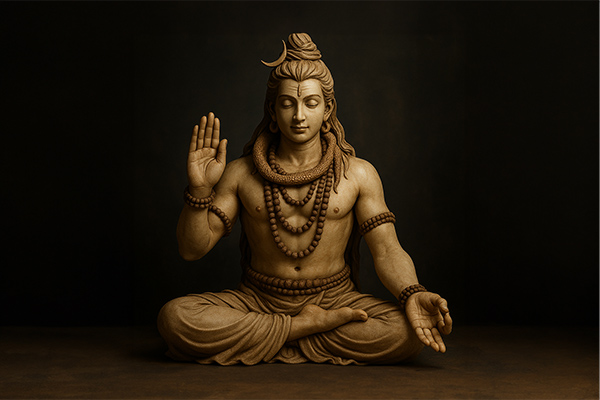
Abhaya Mudra
: Right hand raised, palm facing outward, Shiva’s assurance of fearlessness and divine protection.
Dhyana Mudra:
Hands resting in the lap, palms upward reflecting deep meditation, detachment, and inner stillness.
Gyan Mudra:
Thumb and index finger joined representing spiritual knowledge and liberation.
Vishnu – Varada, Chakra, and Padma Mudras
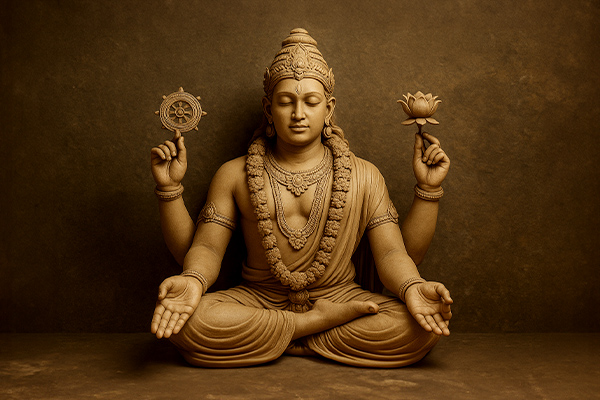
Varada Mudra:
Palm facing downward, often releasing blessings, symbol of grace and generosity.
Chakra Mudra:
Displaying the Sudarshana Chakra, it represents cosmic order and divine justice.
Padma Mudra:
Holding a lotus, indicating purity, detachment, and transcendence.
Lakshmi – Varada and Abhaya Mudra
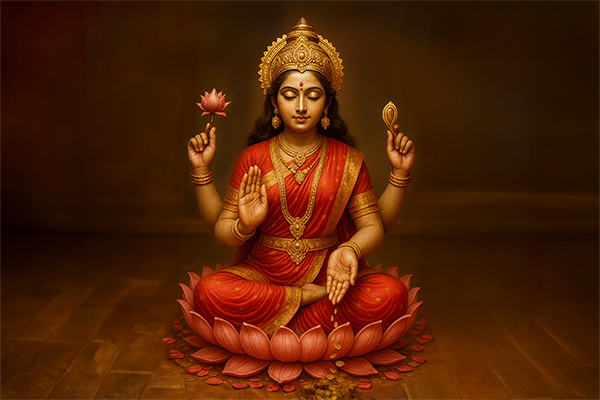
Varada Mudra:
Palm releasing coins or grain, symbol of abundance and prosperity.
Abhaya Mudra:
Uplifted hand blessing the devotee, offering protection and inner peace.
Durga/Kali – Mudras of Power and Fearlessness
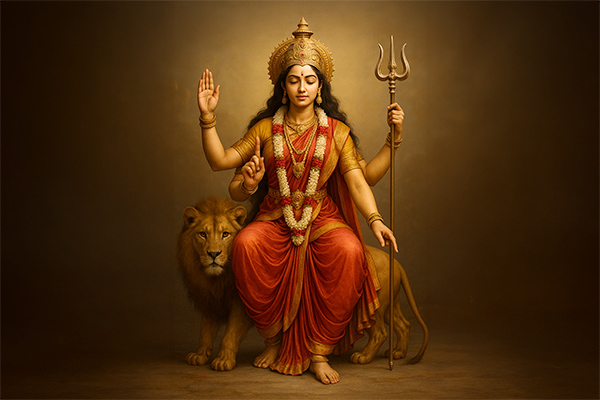
Abhaya Mudra:
The fearless mother protecting her children.
Tarjani Mudra:
Raised index finger, symbolizing command, divine judgment, and dharmic authority.
Trishula Mudra:
Holding the trident, invoking spiritual power and control over body, mind, and ego.
Ganesha – Abhaya, Varada, and Modaka Mudra
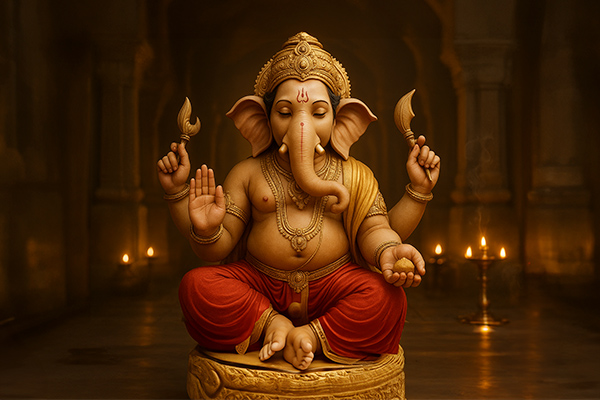
Abhaya Mudra:
Blessing hand raised, Ganesha’s assurance to remove obstacles and fears.
Varada Mudra:
Downward-facing palm, signaling boon-bestowing and fulfillment.
Modaka Mudra:
Sometimes seen holding a sweet (modak) with a gesture of inner bliss and reward for spiritual discipline.
These mudras together represent Ganesha’s role as Vighnaharta (remover of obstacles) and as the guardian of sacred beginnings.
Shri Ram – Dhanur Mudra and Blessing Gesture
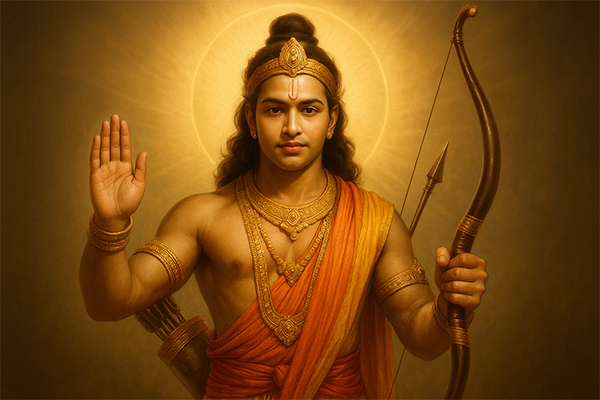
Dhanur Mudra
: Hand holding a bow, sometimes mid-draw, depicting readiness, righteousness, and unwavering dharma.
Abhaya Mudra:
Found in many depictions, signifying graceful authority and divine protection.
Shri Ram’s mudras are calm, composed, and dharmic. Reminding devotees to remain righteous and fearless.
Hanuman – Mudras of Devotion and Strength
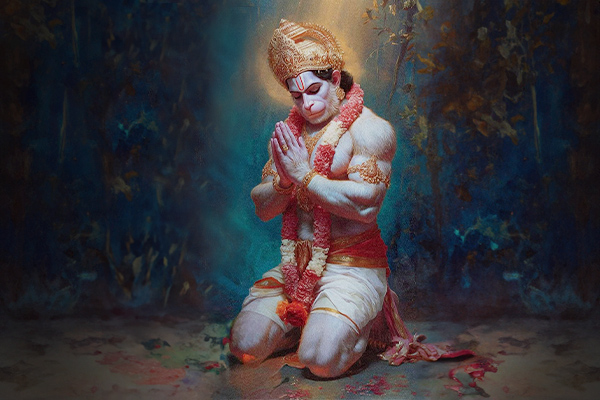
Anjali Mudra
: Hands joined in prayer, symbolizing pure devotion (bhakti) and surrender to Shri Ram.
Abhaya Mudra:
Blessing devotees with courage, energy, and protection.
Gada Mudra:
Holding the mace with a firm grip, reflecting inner strength, service, and spiritual discipline.
Hanuman’s gestures blend humility and power, showing that true strength comes from surrender.
In each of these divine forms, mudras function as silent scriptures, telling the story of the deity’s nature without a single word. Observing them with reverence deepens not just your visual connection, but your inner dialogue with the Divine.
Modern Interpretation and Use of Mudras
While mudras have their origins in ancient Vedic and Tantric rituals, their relevance has not diminished with time. In fact, in today’s fast-paced, distraction-filled world, mudras have found a renewed purpose, as tools for inner stillness, energy regulation, and mindful worship.
Mudras in Contemporary Puja Practice
Many modern practitioners, especially those living outside traditional environments or performing simplified home pujas, may not learn or use the full range of ritual mudras outlined in the scriptures. However, some mudras, like Anjali, Chin, and Sankalpa Mudra, have endured, even without formal training, because they are intuitively meaningful.
In daily practice, mudras help:
- Create a sacred boundary; forming an inner “ritual space” even in ordinary surroundings
- Signal transitions; such as beginning a puja, offering food, or concluding a prayer
- Replace external rituals; when time or space doesn’t allow for elaborate offerings, a mudra can serve as a gesture of intent and energy
For example, someone may not perform a formal Tarpana offering, but by using Tarpana Mudra with water and mantra, they can convey the same devotion and benefit.
Integration with Yoga and Meditation
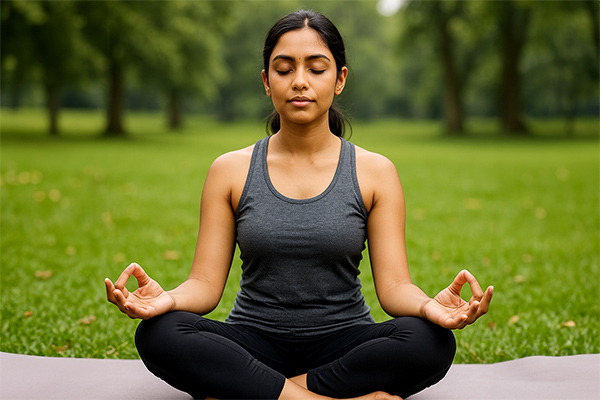
In modern yoga and meditation, mudras are widely used as energetic seals (bandhas) that influence the flow of prana. Many practitioners use:
- Chin Mudra for clarity
- Jnana Mudra for wisdom
- Hridaya Mudra for emotional healing
- Prana Mudra to activate inner vitality
These gestures, once reserved for ritual specialists or ascetics, have now become tools for householders seeking connection, calm, and spiritual balance.
Mudras in Dance, Art, and Visual Culture
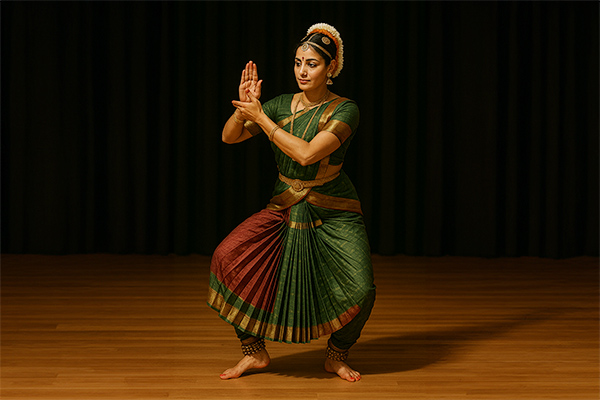
Classical Indian dance forms like Bharatanatyam and Odissi use mudras (called hasta mudras) to tell sacred stories and embody deities on stage. In this form, mudras move beyond the static and become living expressions of mythology, devotion, and philosophy.
Similarly, murti-making and temple sculpture continue to depict precise mudras based on Agamic rules, ensuring that even a still statue radiates the mood and message of the divine.
Why Mudras Matter Today
In the modern world where rituals are often condensed, mudras offer a compact yet powerful spiritual language. They allow a seeker to:
- Pray without words
- Invoke without possessions
- Center the mind without elaborate rites
In this way, mudras act as bridges between ancient practice and modern simplicity. Even when time, space, or tradition is limited, a single gesture, performed with sincerity can connect the devotee with the infinite.
Visual Guide to Mudras
To truly appreciate the power of mudras, one must not only read about them but also see and feel them. Below is a simple visual guide describing the form, meaning, and ritual use of some of the most significant mudras used in puja and devotional practice.
Anjali Mudra (Gesture of Reverence)
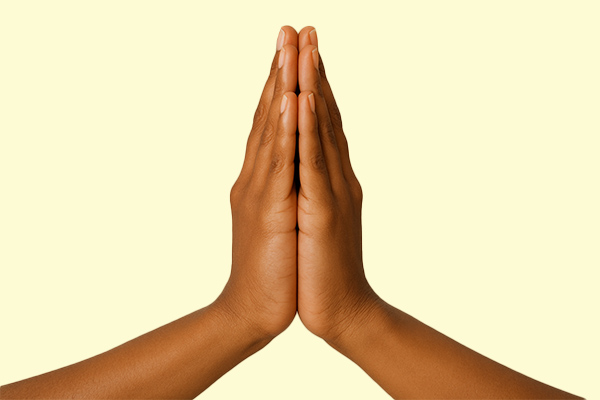
How to do it:
Join the palms together at the heart center, fingers pointing upward.
Meaning:
Surrender, devotion, and respect.
Used during:
Beginning and end of prayers, salutations, receiving blessings.
Chin Mudra (Gesture of Consciousness)
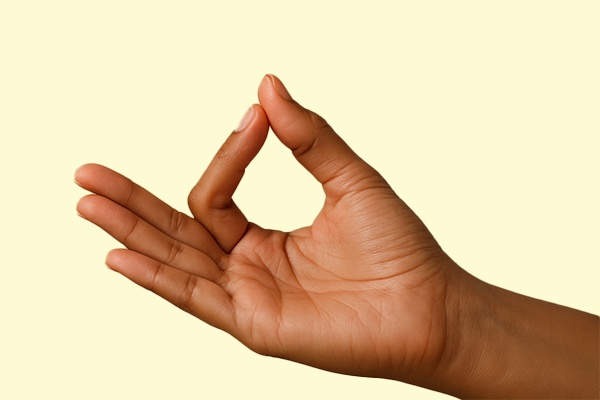
How to do it:
Touch the tip of the index finger to the thumb; keep the other three fingers extended.
Meaning:
Union of the individual soul (jiva) with universal consciousness (Brahman).
Used during:
Meditation, japa, and moments of inward focus during puja.
Abhaya Mudra (Gesture of Fearlessness)
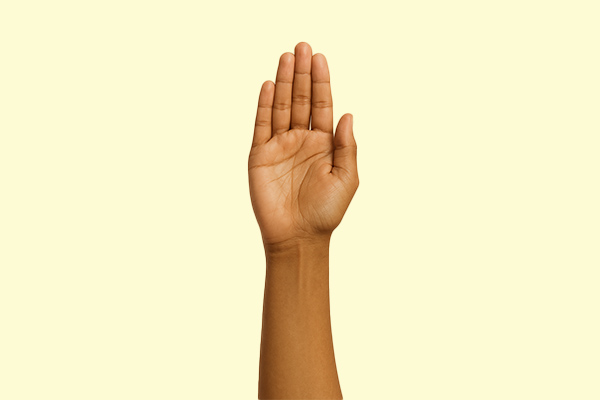
How to do it:
Raise the right hand to shoulder height, palm facing outward.
Meaning:
Protection, assurance, peace.
Used in:
Iconography of deities like Shiva, Hanuman, and Durga; mentally invoked during puja for strength.
Varada Mudra (Gesture of Boon-Granting)
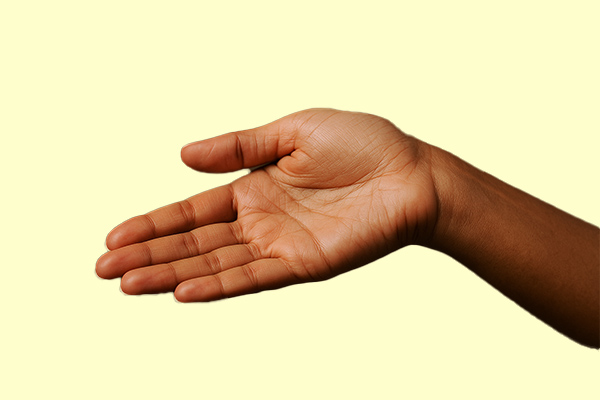
How to do it:
Extend the arm downward with palm facing outward and fingers pointing down.
Meaning:
Blessings, generosity, divine grace.
Seen in:
Murtis of Vishnu, Lakshmi, and Ganesha; represents divine response to prayer.
Sankalpa Mudra (Gesture of Intention Setting)
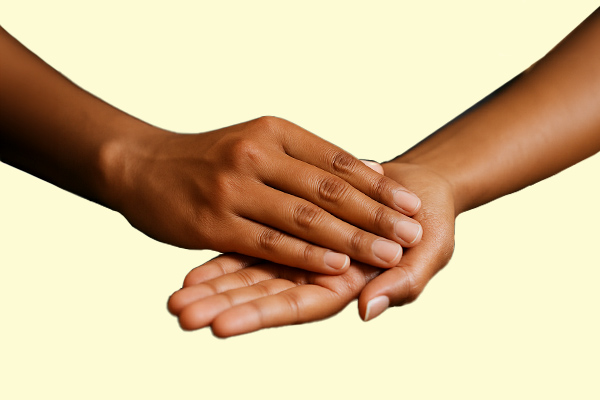
How to do it:
Place the right palm over the left, both resting on the lap.
Meaning:
Commitment, inner vow, initiation of a sacred act.
Used during:
The sankalpa stage of any ritual or spiritual practice.
Tarpana Mudra (Gesture of Offering Liquid)
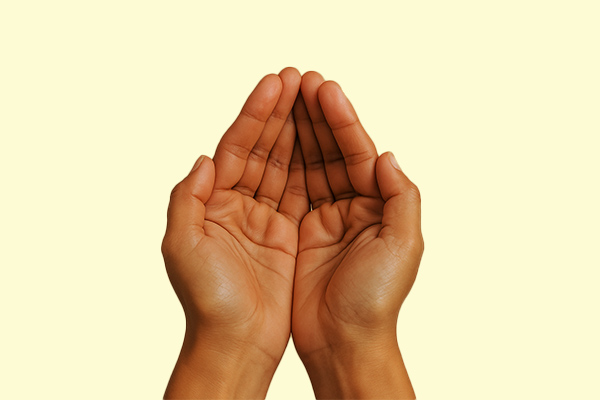
How to do it:
Hold the palms together forming a slight cup, often allowing water or other offerings to trickle through the fingers.
Meaning:
Offering respect or nourishment to ancestors and deities.
Used during:
Pitru tarpanam, arghya, and other offering rituals.
Hridaya Nyasa Mudra
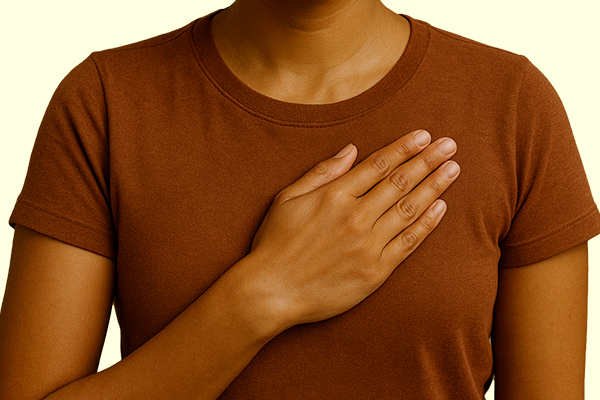
How to do it:
Place the right palm over the heart, often while chanting mantras.
Meaning
: Centring the deity’s energy in the heart.
Used during:
Nyasa rituals, mantra purification, or installing the deity in oneself.
Experience Scripturally Accurate Puja with Rudra Centre
Mudras are a sacred language of devotion, transforming ritual into an embodied act of reverence. If you wish to go deeper and experience these powerful gestures within the complete framework of authentic Vedic rituals, consider Rudra Centre’s puja services. Their expert priests perform ceremonies strictly according to Agamic and Vedic traditions, integrating mudras, mantras, and precise offerings to energize your spiritual practice.
Click on the link to explore Rudra Centre’s online puja services and discover how professional, scripturally guided rituals can support your inner journey with devotion, discipline, and divine alignment.

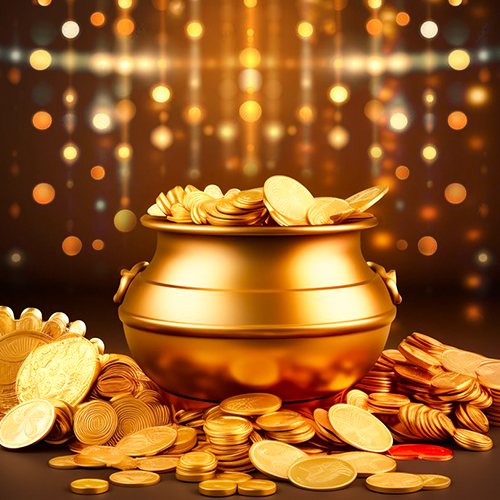
-in-Astrology.jpg)
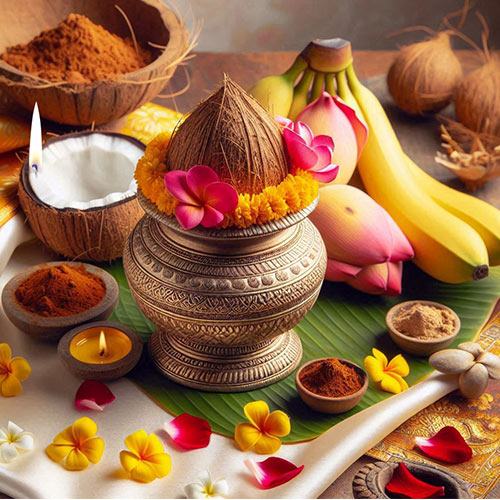

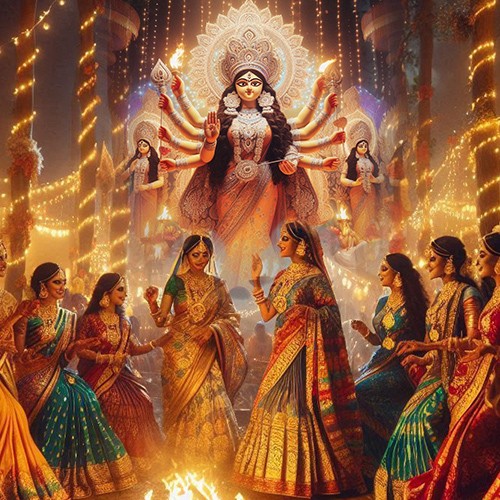
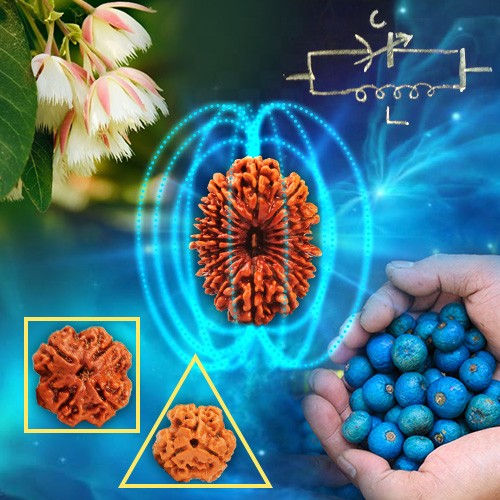

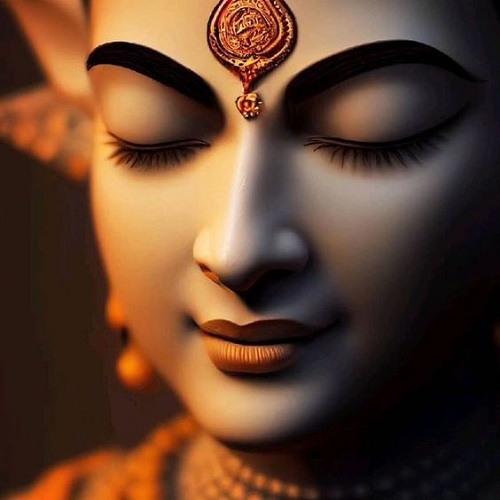
.jpg)
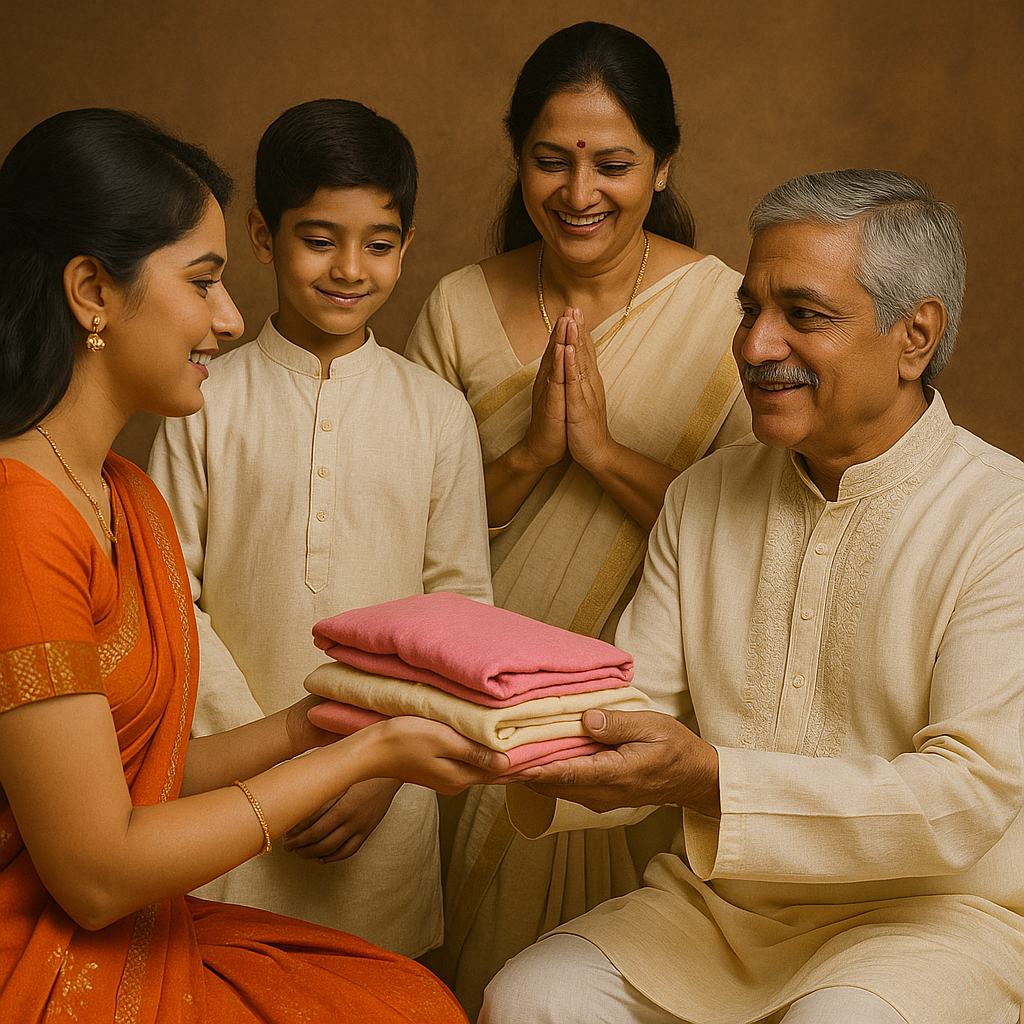

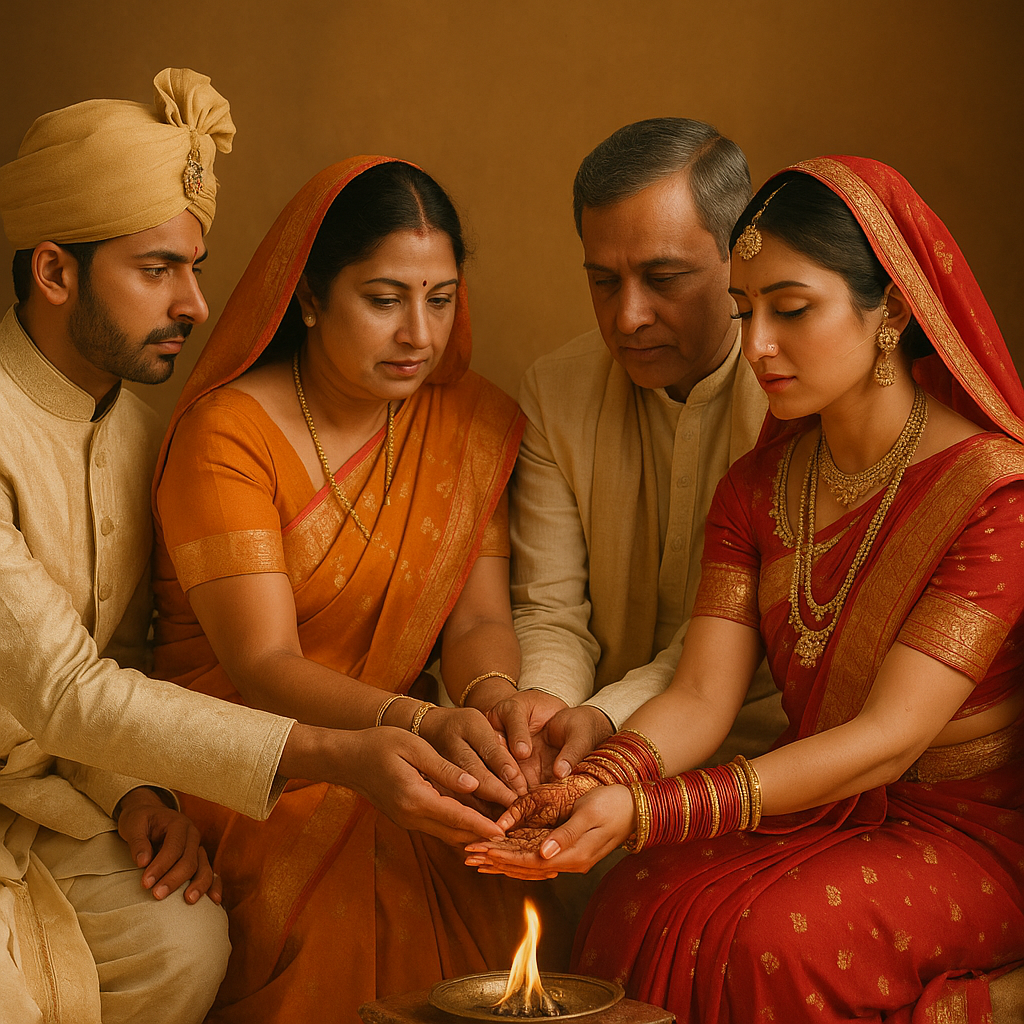
Comments 0
Leave your thought here